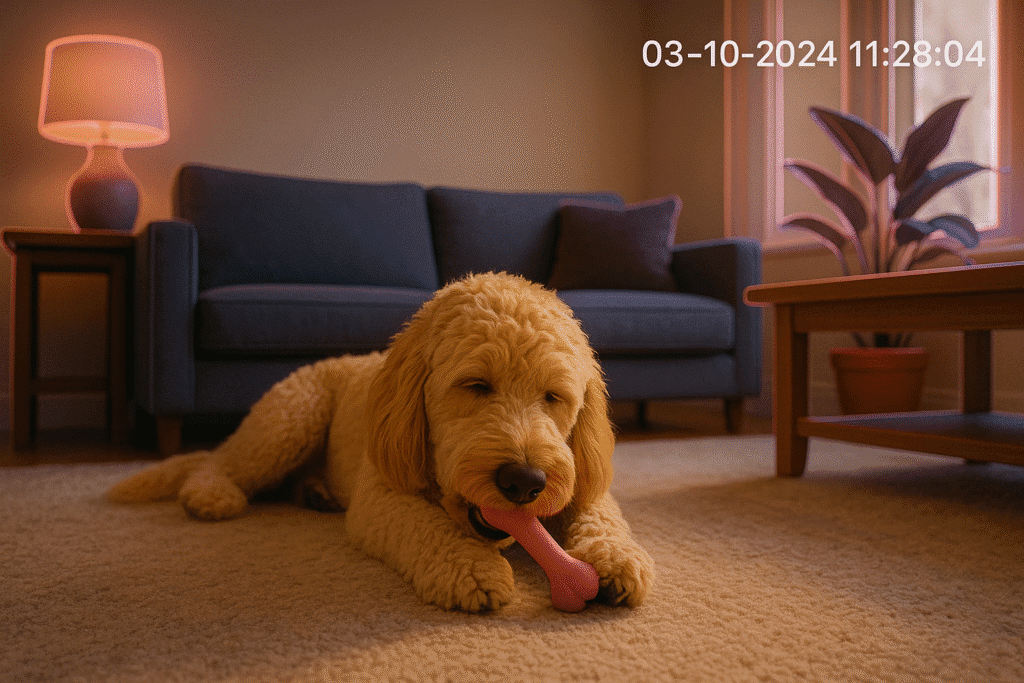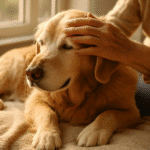Dog Separation Anxiety: A Complete Guide to Helping Your Panicked Pup
We’ve all chuckled at the antics of a “Velcro dog,” the furry shadow that follows us from room to room, even supervising our bathroom breaks. This deep attachment is one of the most endearing parts of their companionship. But for some dogs, that attachment can cross a line from love into fear the moment the front door closes. When you leave, their world doesn’t just get quiet; it crumbles. This is the heart-wrenching reality of dog separation anxiety.
If you’ve come home to a destroyed doorframe, received complaints from neighbors about non-stop barking, or found your dog trembling and panting when you pick up your keys, you are not alone, and your dog is not “bad.” They are experiencing a genuine panic attack. True separation anxiety is one of the most misunderstood and stressful conditions for both dogs and their owners. But there is hope. This guide will help you understand what’s really happening and provide a clear, step-by-step action plan to help your panicked pup find peace and confidence when they are home alone.
Is It Separation Anxiety or Something Else?
The first step is to correctly identify the problem. Not every dog who chews a shoe or barks when you leave has clinical separation anxiety. It’s crucial to distinguish a true panic disorder from other common issues.
It is likely true separation anxiety if the behaviors occur *only* when you are gone or just before you leave. Look for these classic signs:
- Destructive Behavior: The chewing and digging is typically focused on exits like doors and windows, in a frantic attempt to escape and find you.
- Excessive Vocalization: Persistent, high-pitched barking or howling that begins shortly after you leave and can continue for hours.
- Inappropriate Urination or Defecation: A perfectly house-trained dog having accidents inside, but only when left alone. This is a result of extreme distress, not a lack of training.
- Frantic Escape Attempts: Some dogs will cause serious injury to themselves trying to break out of a crate or even chew through walls.
- Pre-Departure Panic: As you prepare to leave (picking up keys, putting on shoes), the dog begins to pace, pant, drool heavily, or tremble.
This is different from a dog who is simply bored (who might chew random objects) or a puppy who is not yet fully house-trained.
Your Step-by-Step Action Plan to Rebuild Confidence
Managing separation anxiety requires patience, consistency, and a focus on making your dog feel safe. This is not about obedience training; it’s about changing their entire emotional response to being alone.
Step 1: Consult Your Veterinarian
Before you begin any behavior modification plan, it’s essential to rule out any underlying medical issues that could be contributing to the anxiety. Your vet is your first and most important partner. They can also discuss whether anti-anxiety medication might be a helpful tool to use in conjunction with your training plan to help your dog relax enough to learn.
Step 2: Change Your “Leaving” and “Returning” Rituals
Dogs are experts at picking up cues. They know that you grabbing your keys and bag means they are about to be alone, which triggers their panic. Your goal is to make these cues meaningless and to make your actual departures and arrivals the most boring events of the day.
- Desensitization: Throughout the day, when you have no plans to leave, pick up your keys and jingle them, then put them down and go back to watching TV. Put on your shoes, walk to the door, then take them off and sit down. This breaks the association that these actions always lead to abandonment.
- No More Drama: Make your goodbyes and hellos incredibly calm and low-key. No long, emotional “I’ll miss you!” speeches. A simple, “Be back soon,” is enough. When you return, ignore the initial frantic greeting. Wait until your dog is calm, then give them quiet, gentle affection.
Step 3: Create a “Safe Haven” & Provide Enrichment
Your dog needs a place where they feel completely secure. For many dogs, this can be a crate, but it must be associated with wonderful things, not punishment. Make the crate a cozy den with comfy bedding. Feed them their meals in the crate. Most importantly, provide a “jackpot” enrichment toy that they *only* get when they are left alone. This could be a frozen Kong stuffed with peanut butter or a challenging puzzle feeder. This helps create a new, positive association: “When my human leaves, I get my most amazing toy!”
Step 4: The Gradual Departure Method
This is the most critical part of the training, and it requires the most patience. The goal is to leave for very short periods and return *before* your dog has a chance to panic.
- Start by asking your dog to stay while you just walk to the other side of the door. Come back in immediately. Repeat.
- Gradually increase the duration. Step outside for 2 seconds, then 5 seconds, then 10 seconds.
- Vary the times. Sometimes do a 10-second departure, then a 3-second one. This prevents them from anticipating a steady increase.
The key is to always return while they are still calm. If you come back and they are already panicking, you’ve gone too fast. Take a step back to a shorter duration where they were successful. This process can take weeks or months. Using a pet camera can be incredibly helpful to monitor their stress levels.
Step 5: When to Call a Professional
Severe cases of separation anxiety can be incredibly difficult to manage alone. Don’t be afraid to seek help. A Certified Separation Anxiety Trainer (CSAT) or a board-certified Veterinary Behaviorist (DACVB) has specialized expertise in creating tailored, effective plans. They can provide guidance and support, which is invaluable for such a challenging issue.
Conclusion: There is Hope for a Peaceful Home
Living with a dog with separation anxiety is heartbreaking. It’s a difficult journey that tests your patience and resolve. But it’s crucial to remember that your dog’s behavior comes from a place of deep fear, not spite. With a structured plan, immense patience, and professional help when needed, you can teach your dog that being alone is not scary. You can rebuild their confidence and restore peace to your home, creating a future where your departures are met not with panic, but with the calm assurance that you will always return.






